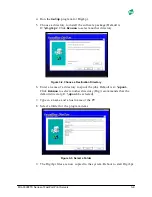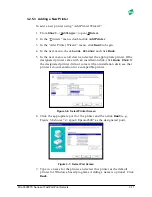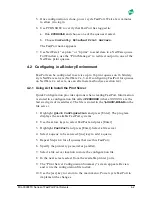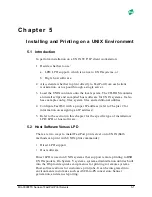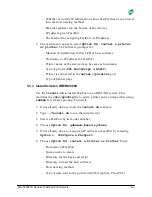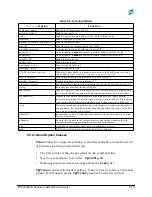
MIL-3000FTX Series of FastPort Print Servers
4-9
4. It attaches to those print queues and goes to the next phase.
Note:
If a context was not specified in the NVRAM, it will not logon to NDS.
5. FastPort then tries to locate normal Bindery file servers.
6. Once it locates one, it looks in its
“preferred server”
NVRAM
value, and if it exists, gets a route to that server.
7. It then looks on the preferred server in the
sys:\login\milan
directory for its configuration file (FPXXXXXX - last six digits of
hardware address).
8. It then reads its configuration file and logs in and attaches to the queues
and servers listed in that configuration file.
9. If a preferred server was not specified in its NVRAM, it will search up
to 24 file servers on the network for a config. file.
10. If a config. file is not found, FastPort will go through a list of servers
and try to log in as print server FPXXXXXX. If successful, it gets the list
of queues and attaches to them.
4.5
Printing to FastPort
Print to FastPort as if it were a Novell print server. For example, use
Novell’s
CAPTURE
command to capture a local PC port to the FastPort
print queue. For example (assuming a host name of raisa on LPT 1):
CAPTURE /S=raisa /Q=lp1
Or, use
NPRINT
to print to FastPort:
NPRINT myfile /S=raisa /Q=lp1
4.6
Printing Specific File Formats
If you are having difficulty printing postscript files using binary emulation,
review section 3.2.2.1. Example 1. Add
b=ps
(from Table 4-1) in the
FPXXXXXX configuration file. Or when printing “HP/GL” files, turn the
banner off by adding
b=off
after the two colons on the FPXXXXXX
configuration file.
For printing through NPS, use NWADMIN. Add two colons before the
entries in Table C-1 (in Appendix C) to the description field.



